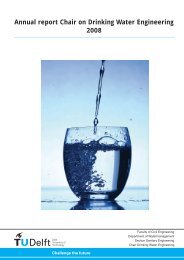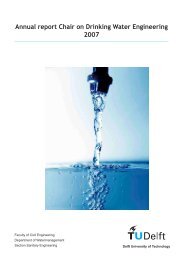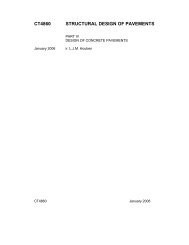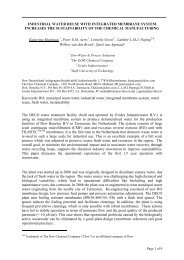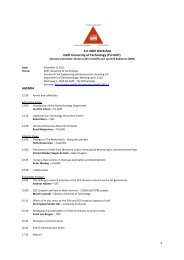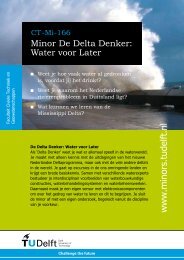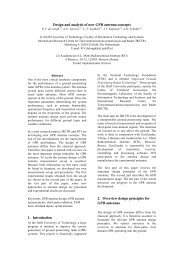Lecture Notes CT 4860 Structural Pavement Design Design of ...
Lecture Notes CT 4860 Structural Pavement Design Design of ...
Lecture Notes CT 4860 Structural Pavement Design Design of ...
Create successful ePaper yourself
Turn your PDF publications into a flip-book with our unique Google optimized e-Paper software.
Figure 10: Longitudinal deformations due to<br />
settlements.<br />
Figure 11: Rutting in an asphalt pavement.<br />
Figure 12: Unevenness due to “buckling” <strong>of</strong><br />
the base made <strong>of</strong> blast furnace slag.<br />
Figure 10 was taken on a provincial road<br />
close to the Delft University in the<br />
Netherlands. The long wave longitudinal<br />
unevenness that can be observed is clearly<br />
the result <strong>of</strong> settlements. Please note that<br />
the settlements also have caused deformations<br />
in the transverse direction.<br />
Next to longitudinal deformations, transversal<br />
deformations can occur. These can be the<br />
result <strong>of</strong> movement <strong>of</strong> the subsoil (settlements,<br />
swell, frost heave), but they also<br />
might be the result <strong>of</strong> traffic. The best known<br />
transversal deformation type due to traffic is<br />
rutting or permanent deformation that occurs<br />
in the wheel paths. A typical example <strong>of</strong><br />
rutting is shown in figure 11. Rutting can<br />
develop in the asphalt layer(s) or in the<br />
unbound base, subbase or subgrade. Rutting<br />
can be the result <strong>of</strong> a densification process or<br />
as a result <strong>of</strong> shear failure. The rutting<br />
shown in figure 11 is clearly caused by shear<br />
failure in the asphalt layer. Shear failure can<br />
be recognized by the ridges that have developed<br />
next to the depression. Furthermore<br />
one can state that the narrower the depresssion<br />
the higher the layer is located in the<br />
structure where the shear failure has developed.<br />
The same is true for corrugations or<br />
washboard formation that is quite <strong>of</strong>ten observed<br />
near traffic lights or on unsurfaced<br />
roads.<br />
Figure 12 shows a type <strong>of</strong> longitudinal unevenness<br />
that is quite <strong>of</strong>ten observed on<br />
pavements with a base course made <strong>of</strong> blast<br />
furnace slags. Because <strong>of</strong> the chemical<br />
reactions that take place, the material wants<br />
to expand resulting into compressive stresses<br />
that at a given moment become higher than<br />
the compressive strength <strong>of</strong> the material.<br />
Buckling <strong>of</strong> the base course is then the result<br />
leading to ridges which negatively influence<br />
driving comfort and which might have a<br />
negative effect on traffic safety because <strong>of</strong><br />
loss <strong>of</strong> cargo from trucks.<br />
10



